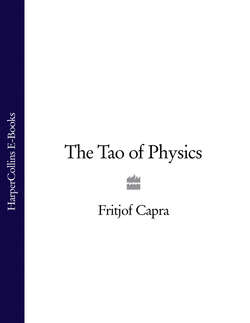Читать книгу The Tao of Physics - Fritjof Capra, Jeremy Lent, Fritjof Capra - Страница 12
Chapter 4 The New Physics
ОглавлениеAccording to the Eastern mystics, the direct mystical experience of reality is a momentous event which shakes the very foundations of one’s world view. D. T. Suzuki has called it ‘the most startling event that could ever happen in the realm of human consciousness … upsetting every form of standardised experience’,1 and he has illustrated the shocking character of this experience with the words of a Zen master who described it as ‘the bottom of a pail breaking through’.
Physicists, at the beginning of this century, felt much the same way when the foundations of their world view were shaken by the new experience of the atomic reality, and they described this experience in terms which were often very similar to those used by Suzuki’s Zen master. Thus Heisenberg wrote:
The violent reaction on the recent development of modern physics can only be understood when one realises that here the foundations of physics have started moving; and that this motion has caused the feeling that the ground would be cut from science.2
Einstein experienced the same shock when he first came in contact with the new reality of atomic physics. He wrote in his autobiography:
All my attempts to adapt the theoretical foundation of physics to this (new type of) knowledge failed completely. It was as if the ground had been pulled out from under one, with no firm foundation to be seen anywhere, upon which one could have built.3
The discoveries of modern physics necessitated profound changes of concepts like space, time, matter, object, cause and effect, etc., and since these concepts are so basic to our way of experiencing the world it is not surprising that the physicists who were forced to change them felt something of a shock. Out of these changes emerged a new and radically different world view, still in the process of formation by current scientific research.
It seems, then, that Eastern mystics and Western physicists went through similar revolutionary experiences which led them to completely new ways of seeing the world. In the following two passages, the European physicist Niels Bohr and the Indian mystic Sri Aurobindo both express the depth and the radical character of this experience.
The great extension of our experience in recent years has brought to light the insufficiency of our simple mechanical conceptions and, as a consequence, has shaken the foundation on which the customary interpretation of observation was based.4
Niels Bohr
All things in fact begin to change their nature and appearance; one’s whole experience of the world is radically different … There is a new vast and deep way of experiencing seeing knowing contacting things.5
Sri Aurobindo
This chapter will serve to sketch a preliminary picture of this new conception of the world against the contrasting background of classical physics;* showing how the classical mechanistic world view had to be abandoned at the beginning of this century when quantum theory and relativity theory—the two basic theories of modern physics—forced us to adopt a much more subtle, holistic and ‘organic’ view of nature.
